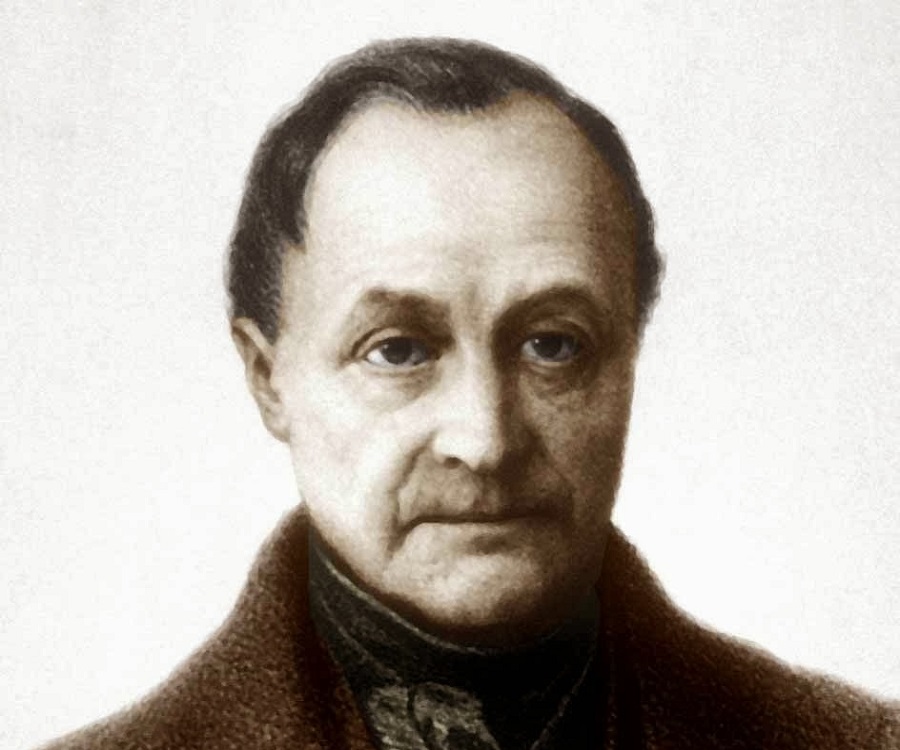
The features of contemporary Islamic thought began to take shape about three centuries following the rise of Islam, that is, roundabout the 10th or 11th centuries AD, and subsequently from day to day became increasingly removed from reality. From that time and until the present-day such a mentality led to cultural disasters.
ALIENATION IS ASSOCIATED with feelings of isolation from one’s social environment. This may be occasioned by psychological reasons, but others suggest alternative patterns of alienation, such as Karl Marx, who illustrated the feeling of alienation the worker feels from his work as a result of its capitalist associations. Alienation can perhaps be caused by a change of place that imposes a new and unaccustomed situation, and this phenomenon is identifiable from the sufferings caused by displacement and the change of the social environment.
The change is brought about by the cultural gap between two geographically separated environments. Usually this gap is commensurate to the distance in space between the two societies. Chinese culture, for instance, differs greatly and patently from English society, and this goes back to the distance in space between China and England, while the gap between English, French or Spanish culture is not so pronounced due to their geographic vicinity. There is no doubt that distance and geographical barriers separating societies define the extent of the cultural gap between them. Increasing the geographical division increases the depth of cultural alienation. We see this in the difficulties suffered by eastern minorities in integrating into western societies, while there is no great difficulty for European minorities to integrate into these societies.
Modern technology, as represented by communications, transportation and publishing, has begun to reduce the distance between peoples. Aspects of an age of globalisation and cultural intermingling have thus begun to make their appearance: the technological shrinking of space is very swift, and is running ahead of differences in society. This has highlighted the opening up of some acute cultural gaps vis-à-vis societies that still lack the necessary qualifications to intermingle globally.
Einstein’s Theory of Relativity holds that space and time constitute two dimensions that may be treated on an equal basis, and this terminology of relativism has entered into the world of philosophy and sociology and many other human arenas. He we shall extend the concept of alienation beyond spatial bounds to chronological alienation. Far from being a figment of scientific imagination, this chronological alienation is an objective reality, but it is one which needs to be clarified.[1] A grandfather, for instance, lives in a state of alienation from his grandchildren (or great-grandchildren if he is granted a long life). Every age has its own ideas, customs and ways of life, in much the same way that a place does. A prisoner, similarly, lives in a state of chronological isolation, in that while his prison may be located in his own country, as a result of his chains he is unable to experience the life changes taking place outside the walls of his prison. On release, he finds that the age is no longer the age he knew.
Chronological alienation bears fatal consequences for the individual and the community
The features of contemporary Islamic thought began to take shape about three centuries following the rise of Islam, that is, roundabout the 10th or 11th centuries AD, and subsequently from day to day became increasingly removed from reality. From that time and until the present-day such a mentality led to cultural disasters – the first and most conspicuous of which was the putting to an end of the one scientific and cultural resurgence that took place in the history of Islam. What distinguishes this mindset is its recalcitrance to modernisation and development; or to put it another way, it is a mindset that belongs to a certain time and therefore must remain so. The chronological gap between its appearance and our current era is about ten centuries.
This mindset did not experience a cultural crisis prior to the fall of the Ottoman Empire at the beginning of the 20th century, when the Empire’s communities had been living in a cultural backwardness balanced by the mentality prevailing over the society at the time. The difficulty created by the First World War was its bringing these societies into the modern era, that is, the passing over of something like ten centuries in a single, rare, historical moment. So we can discern here a time prison in which Islamic societies had been corralled, only to be released at the First World War. Following this war Arab Muslim societies emerged weighed down with a harsh past and burdened with fearful accumulations of backwardness, among these the religious mindset that governed them.
We are faced here with a (historical) chronological, non-spatial, transition. After the fall of the Ottoman Empire this mindset found itself faced by challenges previously unknown to it and without the ability to confront them. Over those ten centuries human thought had progressively developed from a religious, divine thinking mode to a scientific mode of thought that began to gain prominence at the beginning of the 19th century. Every intellectual phase has its specific model for society. In the case of the scientific phase we see how the French philosopher August Comte developed what he termed a new ‘religion of humanity’ for scientific societies.
As the sciences came to be applied, technology started to dominate the intellectual, cultural and political scene. In one of my studies I have heralded the technological age which has come to prevail over developed societies, and I consider technology to constitute a fourth phase in addition to Comte’s three phases.[2] In its own era Islamic societal thinking did not grasp these intellectual developments and did not have the ability to develop a new pattern of thinking.
Islamic thought is a comprehensive system of thinking that has stagnated for centuries and is unable to understand natural science or the logic that lies behind it, nor technology and the logic that lies behind that. It is now living through a frightful time of alienation, one that is characterised by manifold intellectual failures. Just by way of example, one may cite scientific blunders such as ‘the scientific miracle of the Qur’ān’ or the ‘Islamization of science’ and the founding of contemporary parties to manage or construct new societies. What is happening is that an 11th century mindset is attempting to dress itself up in the modern robes of the 21st century without understanding how these robes should be donned or what material they are to be made from. It is the same strange behaviour which is incapable of understanding the time it is living in (its ‘new home’).
This style of patching together and realigning a crumbling past with the present age will not succeed in bringing them together in a single mental container. The difference between them is too wide for any one vessel to accommodate. Most Muslim thinkers are unable to distinguish between the Islamic faith and Islamic thought, and it is for this reason that they handle Islamic thought as if it were some closed construction incapable of importing or interacting with anything else. Any modernisation is therefore considered dubious and unacceptable. [3]
Islamic thought created a stagnation problem that embedded some intellectual fixed points. After a number of centuries this same mindset attempted to modernise and become active, but only within the confines of the fixed points and limitations which it had created for itself. Some today seek recourse to contemporary Islamic thought as something necessary for solving problems and confronting contemporary challenges. But this in itself suffers from a number of difficulties[4] and fearful dilemmas, all of which will make this difficult to achieve.
The moment they dispensed with intellectual freedom they squandered the opportunity to build
Conversely, in the Islamic thinker Haydar Haballah one can witness this conflict and difficulty which contemporary Islamic thought is experiencing. For you find him addressing problems such as: the problem of the fatwa; the problem of the sanctified text and methods for analysing it; abandonment of philosophy and alienation from reality; the problem of religious schools; the crisis of method. Each of these problems is too great to be resolved even by army of such thinkers.
As a matter of fact Islamic societies may not be the only ones to suffer from chronological alienation; there is another society which suffers from alienation from its world: the Amish community.[5] The Amish are a self-contained Christian group that does not believe in cultural development. For this reason it isolated itself from European life and, after the discovery of America, the Amish decided to emigrate there in the 18th century in order to free themselves from cultural pressures conflicting with their beliefs, and from religious persecution. The community decided upon cultural self-isolation and maintained their pacifism despite persecution and harassment.
What chiefly distinguishes them is their rejection of arrogance, haughtiness and pride. For them the highest of values include humility, calm, composure and tolerance. They place a high value on the collective life and they see technology as something that has the potential to increase an individual’s vanity and isolate him from his community. Despite their isolation and conservative nature the Amish today make use of carriages but these are not the same as the carriages of yore, their traditional style of dress has began to take on some modernising features and they operate Internet sites. This community does not evangelise, nor does it impose its views upon others. It elected for cultural isolation within the very heartland of cultural modernity (Europe). The Amish do not constitute a high-density population and number about a quarter of a million individuals, most of whom live in the United States of America. Due to their self-isolation and restricted intermarriage (they form genetically closed communities), they suffer from genetic disorders carried over from one generation to another, such as stunted growth. The Amish accepted chronological alienation, they are happy with it and have adjusted their small world to it. They have not aspired to seek out a replacement for contemporary thought.
There is no doubt that the chronological alienation of the Amish is something entirely different from the chronological alienation of Arab Muslim societies. The Amish isolated themselves from science and technology out of a desire to exalt human societal values and in an attempt to create a peace-loving, tolerant man, and this is what they believe in. On the other hand, the root cause of Arab Islamic alienation is the absence of thought or the limitations placed upon its potentialities. This intellectual pattern of sacralised ignorance was imposed through oceans of blood and sanctified violence, and it is this that has led to all the fearful setbacks.

Suggested Reading
Due the absolute age-long domination of this mindset over Arab Muslim societies, it has for centuries penetrated deep into the joints and cells that go to make up these societies, so much so that they are now no longer capable of movement or escape. Thus, well-nigh a century after the fall of the Ottoman Empire these societies are incapable of finding a rational route within the Islamic mental paradigm. And it will not be able to find this since once Islamic thought experienced its first and only cultural awakening and showed itself qualified to grow, crystallise and develop in a natural chronological progression, it aborted itself before it had time to enter into its full flowering. Therefore, due to the developments that took place over time, a thinking pattern of this type will not be able to preserve the vigorous state of its first appearance.
The chronological alienation of Arab Muslim societies bears some fatal consequences for the individual and for the community. Having got used to centuries-long inactivity and cultural stagnation, these societies are now confronted with a fast developing world that is now shrunken in scale, and one which is about to tear down all of its dividing lines. It is a world in which these societies can do nought else but recall history and live in false dreams about their past. The moment they dispensed with intellectual freedom ten centuries ago they squandered the opportunity to build themselves up. They are now hanging onto the tails of impotence, and without understanding the cause of their collapse since free critical thought still eludes them.
Just as spatial alienation becomes all the sharper when the distances are longer, chronological alienation becomes more acute with the passing of time. And with a time distance of the order of ten centuries, we simply cannot imagine the depths of the alienation crisis that is occurring. There is no doubt that it is very acute and brutal both to the one that feels alienated in time and to the one – living in the modern age – who associates with him. Most of the societal difficulties that Arab Islamic societies are experiencing are the result of this fearful time gap between an obscure heritage that shackles freedom and thought, and the dynamic of modern life marked by its freedom, openness and swift pace of change.
We simply cannot imagine the depths of the alienation crisis
Sluggish development over time among living entities leads to their death and disintegration. The same goes for human thought; it is in need of constant updating and review. Intellectual stagnation and self-isolation leads to intellectual disintegration and collapse, and such appears to be clearly in evidence in contemporary Islamic thought. The limits of the paradigm have begun to fade, to be replaced by Machiavellianism with all the creative and moral collapse that that brings with it. Nothing indicates this more than contradictory fatwas lurching from one flagrant violation against humanity to another, a violation that is not merely one of human rights, nor one that stops at legalised debauchery.
This type of thinking seeks to turn a human being into a malleable tool shorn of any intellect, one that that has to constantly seek guidance on the simplest matters of life, on the grounds that there are those who are in the know as to what the Divine Being demands, and are privy to its secrets. It turns the role of worship into a matter of divine embassies directed by those representing the Divine Being here on earth. This stagnant mindset has generated a form of behaviour sharply contradicting its thought with its practice, and this contradictory behaviour has come to be accepted by society. Contemporary Islamic intellectual institutions have now lost any connection to the path that prepares the individual for the next life and have simply collaborated in placing God-fearing people at the mercy of those who wield power on earth.
Chronologically estranged thought in either of its two poles – whether it be the extremist, terrorist type or the peace-loving, meek type – does not have the capacity to align itself with the modern age, nor can it build and bridge the time gap. For the stranger has no knowledge of the road map.
[1] M. Sanduk, البعد الرابع و تصادم الحضارات . كيف نخلص المستقبل من الماضي؟ (‘The Fourth Dimension and the Clash of Civilisations: How can we free the future from the past?’) Al-Zamān, no. 1735, 2004.
[2] M. Sanduk, Is Technology a New Way of Thinking?, The Journal of Technology Studies, Volume XXXVIII, Number 2, 2012.
[3] Muhammad Al-Behi, الفكر الإسلامي الحديث وصلته بالاستعمار الغربي (‘Modern Islamic Thought and its Connection with Western Imperialism’), مكتبة وهبه – القاهرة, 1395. Jamal Sultan, جذور الانحراف في الفكر الإسلامي الحديث (‘The Roots of Deviancy in Modern Islamic Thought’), The Centre for Islamic Studies, Birmingham, United Kingdom, 1991.
[4] Haydar Haballah, معوقات التجديد والنهضة في الفكر الإسلامي الحديث والمعاصر (‘Obstacles to Renewal and Resurgence in Contemporary and Modern Islamic Thought’), مركز افاق للدراسات و البحوث. .
[5] John Hostetler , Amish Society, JHU Press, 1993



